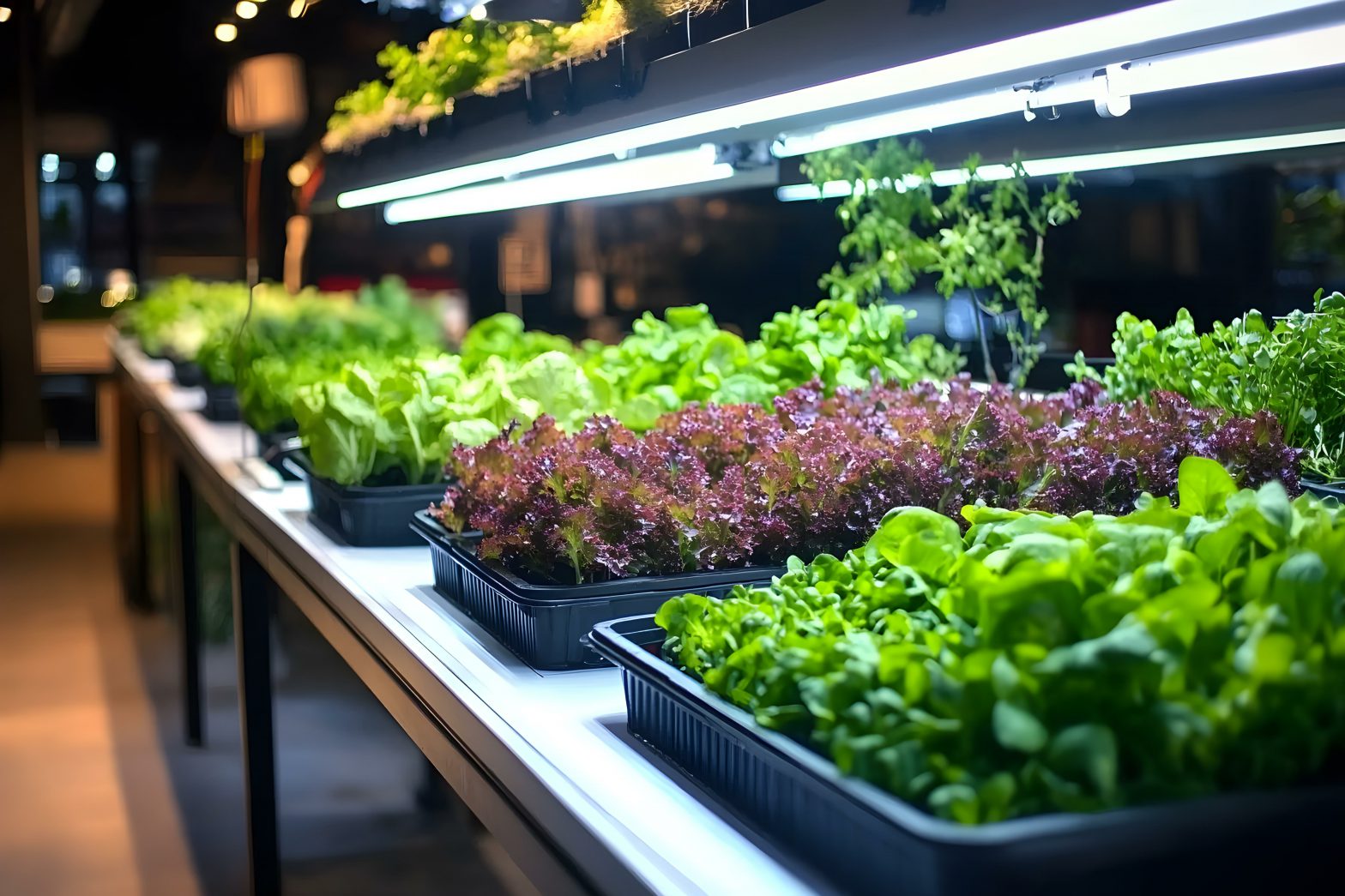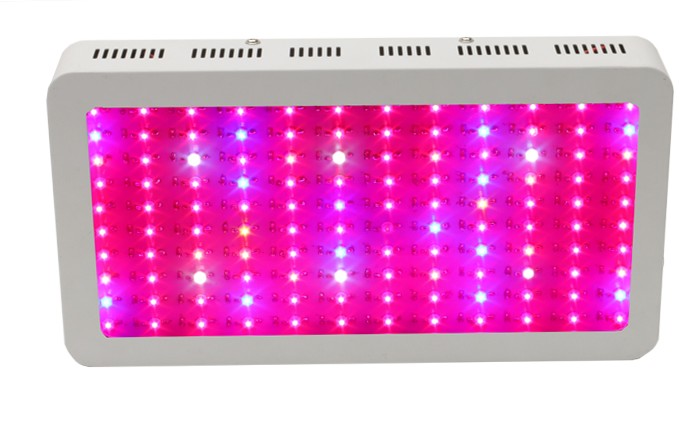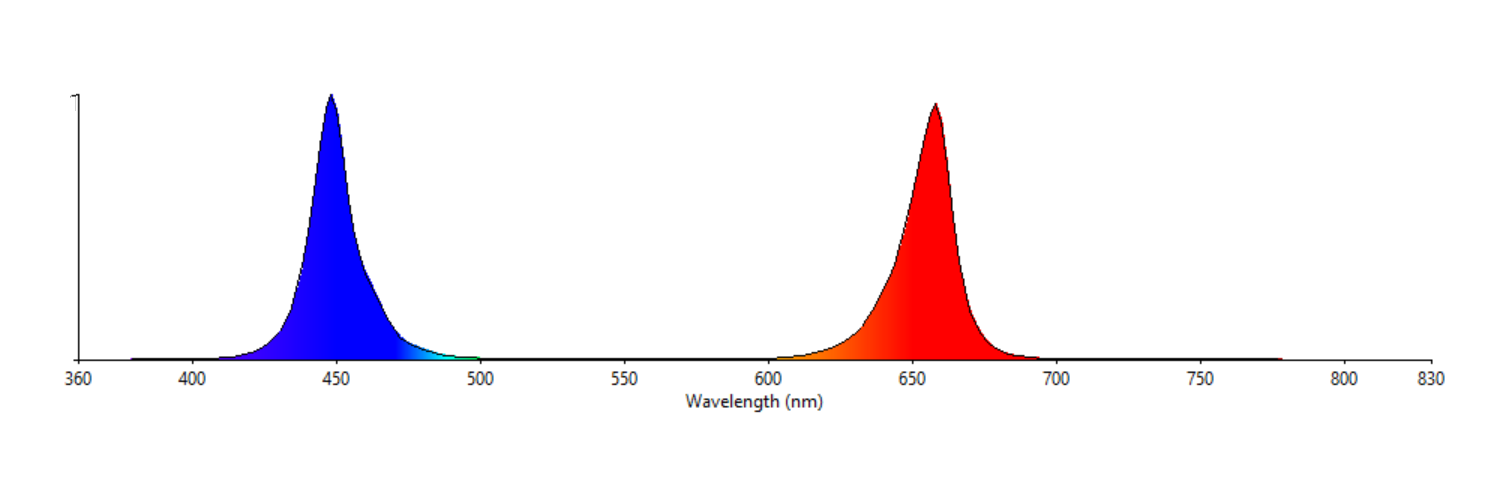
What are full spectrum LED grow lights?
LED grow light technology is relatively new. One of its advantages is the ability to produce a multitude of different emission spectra.
In this article, we discuss what constitutes a full spectrum LED grow light and whether they are advantageous for plant growth.
What is a traditional LED grow light spectrum?
A traditional grow LED grow light typically uses a combination of blue and red LEDs. You can generally tell by the pinkish-purple light emitted - this is the result of mixing blue and red light.

The reason traditional LED grow lights use this formulation is that plants perform photosynthesis most effectively in the blue and red part of the spectrum.
Looking at this spectrum, however, it is clear that only a narrow part of the entire visible spectrum is covered. This is certainly far from what we would call full spectrum.
Generally, these grow lights use monochromatic LEDs - i.e. a blue LED and a red LED. You can typically tell by taking a look at its spectral power distribution, as shown below:

But if blue and red light is the best at contributing to photosynthesis, why do we care about other wavelengths?
The answer is that there are other processes that affect plant health and vigor that are not simply a matter of how much photosynthesis occurs. Ultimately, this can mean a higher quality crop, improved aesthetics, or higher nutrient content. In other words, quality rather than just quantity.
A strict definition of full spectrum LED grow lighting
There is still a significant amount of research that still needs to be performed, but more and more results from experiments and studies are pointing to the fact that plants grow best under a balanced spectrum.
This can be explained by the fact that plants have evolved to use natural daylight not only as a food source but signal for things like flowering and fruit production.
Therefore, the strict definition of full spectrum would entail a spectrum that has energy ranging from ultraviolet to infrared, just like natural daylight.
A light source with this type of spectrum generally appears white. If an LED grow light emits white light, does that automatically make it a full spectrum grow light?
The answer is no, and we discuss this further in the next section.
Different ways to create white light
Unlike the traditional LED grow light method of blue and red monochromatic LEDs, full spectrum grow lights will typically use a phosphor coating.
The reason a phosphor coating is helpful in full spectrum grow lights is that phosphors take light from a single narrow wavelength range (e.g. 460 nm blue) and convert it to a wide range of longer wavelength light (e.g. 600 - 700 nm red).
By coating a blue LED with a mixture of green, yellow and/or red phosphors, much wider coverage across the visible spectrum can be achieved.
Because phosphors emit light of so many different wavelengths, the result is a balanced mixture of colors that result in white light.
Just because an LED grow light emits white light, that does not necessarily mean that it is truly a full spectrum light source.
One convenient method is to evaluate its color rendering index (CRI). This is a useful metric because it tells us how similar it is to natural daylight. A higher CRI rating indicates that the light source is more similar to natural daylight, which is an ideal, full-spectrum light source.
In this article, we discuss what constitutes a full spectrum LED grow light and whether they are advantageous for plant growth.
What is a traditional LED grow light spectrum?
A traditional grow LED grow light typically uses a combination of blue and red LEDs. You can generally tell by the pinkish-purple light emitted - this is the result of mixing blue and red light.

The reason traditional LED grow lights use this formulation is that plants perform photosynthesis most effectively in the blue and red part of the spectrum.
Looking at this spectrum, however, it is clear that only a narrow part of the entire visible spectrum is covered. This is certainly far from what we would call full spectrum.
Generally, these grow lights use monochromatic LEDs - i.e. a blue LED and a red LED. You can typically tell by taking a look at its spectral power distribution, as shown below:

But if blue and red light is the best at contributing to photosynthesis, why do we care about other wavelengths?
The answer is that there are other processes that affect plant health and vigor that are not simply a matter of how much photosynthesis occurs. Ultimately, this can mean a higher quality crop, improved aesthetics, or higher nutrient content. In other words, quality rather than just quantity.
A strict definition of full spectrum LED grow lighting
There is still a significant amount of research that still needs to be performed, but more and more results from experiments and studies are pointing to the fact that plants grow best under a balanced spectrum.
This can be explained by the fact that plants have evolved to use natural daylight not only as a food source but signal for things like flowering and fruit production.
Therefore, the strict definition of full spectrum would entail a spectrum that has energy ranging from ultraviolet to infrared, just like natural daylight.
A light source with this type of spectrum generally appears white. If an LED grow light emits white light, does that automatically make it a full spectrum grow light?
The answer is no, and we discuss this further in the next section.
Different ways to create white light
Unlike the traditional LED grow light method of blue and red monochromatic LEDs, full spectrum grow lights will typically use a phosphor coating.
The reason a phosphor coating is helpful in full spectrum grow lights is that phosphors take light from a single narrow wavelength range (e.g. 460 nm blue) and convert it to a wide range of longer wavelength light (e.g. 600 - 700 nm red).
By coating a blue LED with a mixture of green, yellow and/or red phosphors, much wider coverage across the visible spectrum can be achieved.
Because phosphors emit light of so many different wavelengths, the result is a balanced mixture of colors that result in white light.
Just because an LED grow light emits white light, that does not necessarily mean that it is truly a full spectrum light source.
One convenient method is to evaluate its color rendering index (CRI). This is a useful metric because it tells us how similar it is to natural daylight. A higher CRI rating indicates that the light source is more similar to natural daylight, which is an ideal, full-spectrum light source.
Other Posts
Browse Waveform Lighting Products
A-Series LED Bulbs
Our A19 and A21 lamps fit in standard lamp fixtures and are perfect for floor and desk lamp fixtures.
Candelabra LED Bulbs
Our candelabra LED bulbs offer soft and warm light output in a decorative bulb style that fits E12 lamp fixtures.
BR30 LED Lamps
BR30 lamps are ceiling lamps that fit in residential and commercial fixtures with 4-inch or wider openings.
